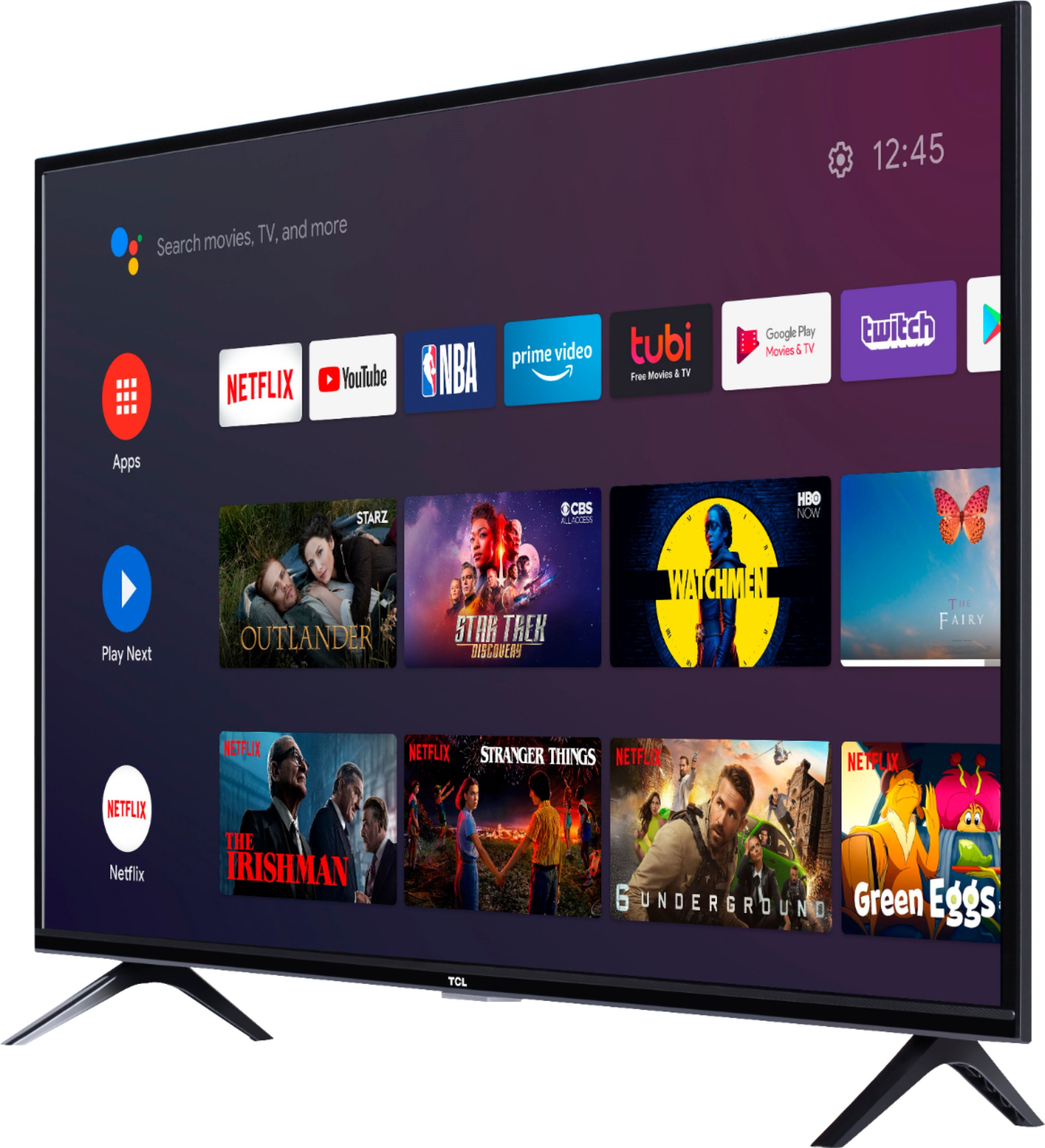TCL Android TVs may have 'Chinese backdoor' — protect yourself now (Update)
Security researchers say they found some very serious issues

Update 3:57 pm ET: TCL has provided a statement to Tom's Guide, which you can read in full below.
TCL smart TVs running Android seem to have huge security holes and could even be designed to spy on users around the world, two security researchers say. The issues do not affect TCL sets running Roku software.
"I can wholeheartedly say that there were multiple moments that I, and another security researcher that I met along the way, couldn't believe what was happening," wrote a researcher calling himself "Sick Codes" in a blog post earlier this week. "On multiple occasions I found myself feeling as though, 'you couldn't even make this up.'"
- 5 essential smart TV security tips to protect your privacy
- OnePlus 9 design just leaked — here's your first look
- Plus: WhatsApp is about to get a killer new feature for group chats
Sick Codes and the other researcher, John Jackson, who works at photo-licensing service Shutterstock, discovered that they could access the entire filesystem of a TCL smart TV over a Wi-Fi connection using an undocumented TCP/IP port. They found that they could also overwrite files on the TV.
All of this could be done without entering a username, a password or any kind of authorization at all. The flaws were assigned the Common Vulnerability and Exposure catalog numbers CVE-2020-27403 and CVE-2020-28055 after the researchers notified the U.S. Computer Emergency Response Team (US-CERT) at Carnegie Mellon University in Pittsburgh.
The flaws were patched on the TV model that Sick Codes and Jackson were analyzing — more on that below — but apparently not all on TCL smart TV models.
TCL responds
TCL provided the following statement to Tom's Guide after we contacted the company for comment:
Sign up to get the BEST of Tom's Guide direct to your inbox.
Get instant access to breaking news, the hottest reviews, great deals and helpful tips.
“TCL was recently notified by an independent security researcher of two vulnerabilities in Android TV models. Once TCL received notification, the company quickly took steps to investigate, thoroughly test, develop patches, and implement a plan to send updates to resolve the matter. Updating devices and applications to enhance security is a regular occurrence in the technology industry, and these updates should be distributed to all affected Android TV models in the coming days.
TCL takes privacy and security very seriously, and particularly appreciates the vital role that independent researchers play in the technology ecosystem. We wish to thank the security researchers for bringing this matter to our attention as we work to advance the user experience. We are committed to bringing consumers secure and robust products, and we’re confident that we’re putting in place effective solutions for these devices.”
Browsing someone else's file system on your phone
Tom's Guide reached out to Sick Codes and Jackson over Twitter, and in the course of the resulting conversation, we were sent a URL that appeared to give full access to the file system of a TCL smart TV in Zambia.
We were able to browse the directories of this random person's TV through the Chrome browser on our Android phone, until the TV user apparently turned the TV off.
(Sick Codes told us that was one of only a dozen TCL smart TVs worldwide that was directly on the internet; in most cases, you'd have to be on the same local Wi-Fi network to be able to browse the file system.)
"When in the history of your career have you ever needed to serve the entire filesystem over http?" wondered Sick Codes in his blog post.
Tom's Guide has reached out for comment to the North American division of TCL, which is a Chinese company, and we will update this story when we receive a reply.
Are TCL TVs collecting files from customers?
The pair also found that an app on the TCL TV, called Terminal Manager Remote, had a configuration file listing servers that seemed to be ready to handle files, logs, and screenshots pertaining to user TVs.
"It's a Chinese backdoor," Sick Codes told us in a telephone conversation.
The researchers' blog post had a screenshot of the server list, which was divided into four regions. One was for mainland China, another for the rest of the Asia-Pacific region (including Hong Kong and Taiwan), a third for the Middle East, Africa and Europe, and the fourth for Latin America and North America.
It wasn't exactly clear whether those servers were meant to send files to TCL TVs, or to receive files from them.
"I don't have the answer," wrote Sick Codes in the blog post. "TCL does, however."
Tom's Guide tried to access a few of the URLs and was told that "GET" requests — normal requests by web browsers to download files — were not supported. We'll try to send some "POST" requests to upload files after working hours and will update this story if we discover anything interesting.
Sick Codes also sent us a link to what appeared to be a wide-open web server holding dozens of TCL firmware updates. No authorization was needed to view the files. We did not try to download any, but Sick Codes said it would be possible.
A 'silent patch' with worrisome implications
Sick Codes and Jackson said they tried to reach out to TCL using email, Twitter, telephone and direct posting on the TCL website to notify them of the flaws beginning Oct. 16, but it took until Oct. 26 before they got an acknowledgement that the message had been received.
"I called TCL and talked to a support representative," Sick Codes wrote in the blog post. "I urged her that we had a serious vulnerability on our hands and she stated that she had no contact info to the Security team, and didn’t even think/know if TCL had a Security team."
On Oct. 29, the problems on their test TV set were suddenly fixed without any notification, alert or request for user authorization.
"This was a totally silent patch," Sick Codes told The Security Ledger, which first reported this story. "They basically logged in to my TV and closed the port."
To Sick Codes, this is just as worrisome as the security flaws that got patched on some models (but not the one on which Tom's Guide could browse the file system).
"This is a full on back door," he told The Security Ledger. "If they want to, they could switch the TV on or off, turn the camera and mic on or off. They have full access."
What should I do if I have a TCL smart TV?
If you own a TCL smart TV, first check whether it's one of the versions running Roku software. Those do not seem to be affected by these flaws.
If it's not a Roku model, then you'll want to make sure that your home Wi-Fi network has a very strong password, and that you don't give visitors the password. Many routers let you set up a separate network for that.
You'll also want to get into your router's administrative menu to disable access to devices inside your network from the internet. We've got a list of other smart-TV security tips.
Also, be aware that the TV manufacturer may be able to see what you're watching. That's not something specific to TCL — many smart TVs, set-top boxes and DVRs keep tabs on what their customers watch.
Paul Wagenseil is a senior editor at Tom's Guide focused on security and privacy. He has also been a dishwasher, fry cook, long-haul driver, code monkey and video editor. He's been rooting around in the information-security space for more than 15 years at FoxNews.com, SecurityNewsDaily, TechNewsDaily and Tom's Guide, has presented talks at the ShmooCon, DerbyCon and BSides Las Vegas hacker conferences, shown up in random TV news spots and even moderated a panel discussion at the CEDIA home-technology conference. You can follow his rants on Twitter at @snd_wagenseil.
-
eyeoncomputers This is a very well written article.Reply
This flaw seems to affect TCL TVs with Android software.
Update: looks like they changed the image.
Why did you choose the picture of a TCL using the Roku software, which does not seem to be affected by the vulnerability.
It's just makes the article confusing and inconsistent from looking at the title, image, and the article itself. -
Thorbaby Absolutely agree. Seems like a scare tactic since they’re so popular to grab users attentionReply
bad on toms guide -
SleepyD I agree with both of you it’s ridiculous to use the picture of a TCL Roku TV. Either for clicks or lazy blogging. I expect better from Tom’s Guide.Reply -
naturesninja I remember when tablets were first hitting the market and no name import models from China were filled with all manner of spyware. This is the way.Reply -
PaulWagenseil Replyeyeoncomputers said:Why did you choose the picture of a TCL using the Roku software, which does not seem to be affected by the vulnerability.
It's just makes the article confusing and inconsistent from looking at the title, image, and the article itself.
For the simplest and dumbest of reasons: Because I thought the image showed a TCL TV running Android, not one running the Roku software. That's how the image was labeled in our image bank. After Roku reached out to me over the weekend and convinced me we were using the wrong image, I changed it. -
werewolf fox If China wants to monitor my daily routine of seinfeld, anime, sports, and video games, let them, who cares? It's not like we're storing codes for sub atomic weapons on our netflix favorites.Reply
On a side note, I've noticed TVs built in China generally have a much easier for the eyes resolution. I have a 19" insignia a 24" westinghouse and a 32" rca and the insignia by far is the best.. -
ConcernedUser28 I have a TCL 43S405 model, a Roku model, and it definitely spies on you. I was watching a "Christmas Movie" on it through one of the HDMI ports that was hooked up to my laptop, running VLC media player. 20 minutes into the movie the menu system on the TV popped up in the corner showing me "Other ways to watch Christmas Movie...". This video file was played on my computer, not on the TV's OS. How the hell did it know what I was watching without sending video info lifted from the HDMI back to another server for analysis?!Reply
Edit:
After a little more internet searching I found out this is a thing called ACR(Automatic Content Recognition). It can be disabled via the TV's settings on most sets.
https://www.consumerreports.org/privacy/how-to-turn-off-smart-tv-snooping-features/

